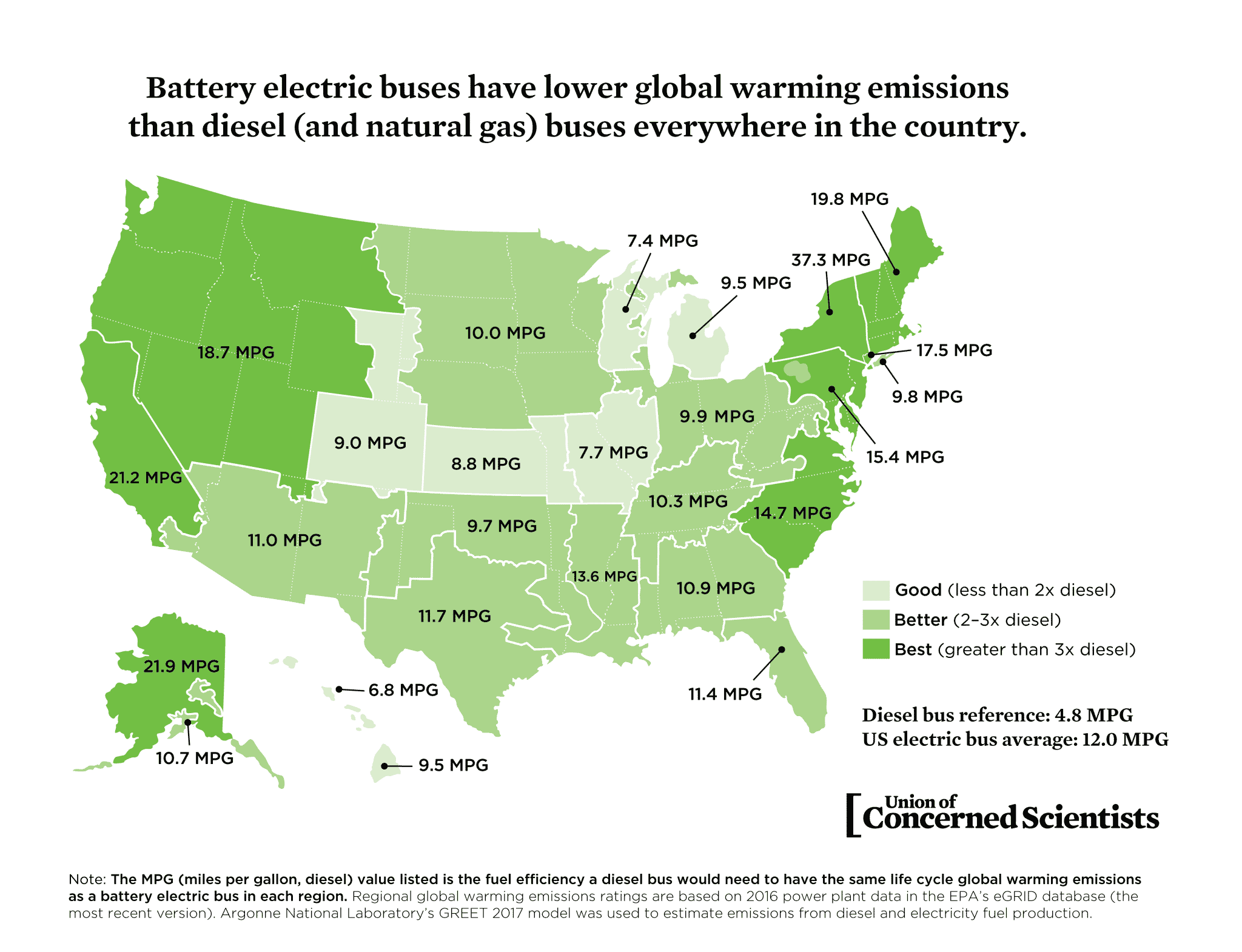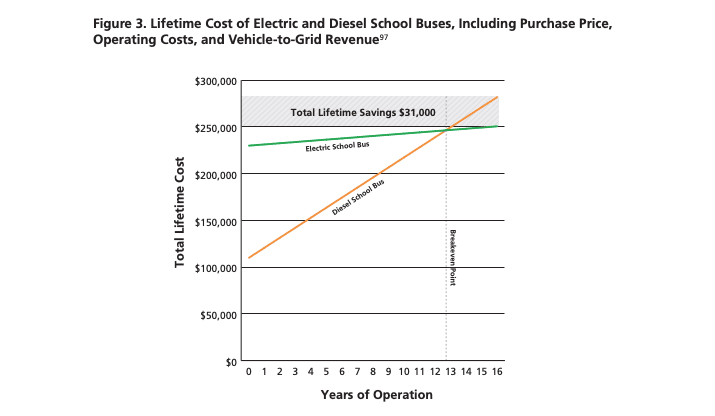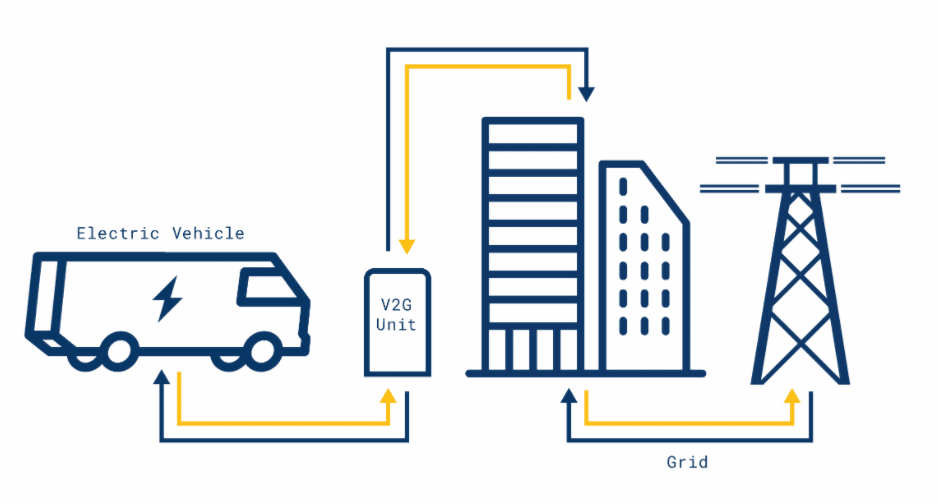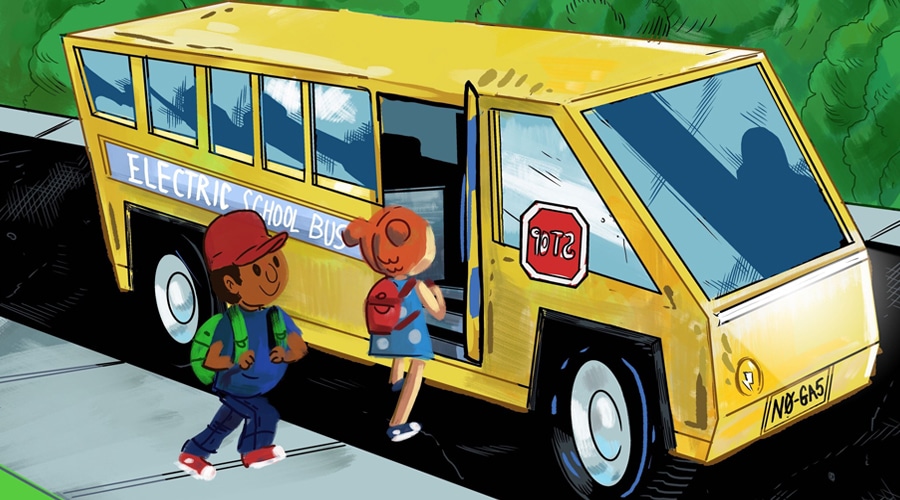For regular readers of our blog, the following statement won’t be new news to you: solar energy is now a smart investment for schools to save money, provide STEM learning opportunities, and contribute to a cleaner, healthier environment for communities. The sky is also blue. Okay, but here’s the second swing of a clean energy one-two punch: electric school buses. The deployment of EV buses has increased rapidly since 2014 when the first all-electric school bus was delivered to the Twin River School District in Sacramento, CA. Over four hundred electric school buses are now operating in the U.S., with numbers projected to rise.
Today, roughly ninety-five percent of America’s school buses run on diesel. These buses move students from point A to point B just fine, but they expose their 25 million daily student riders (and surrounding communities) to diesel exhaust—an internationally recognized cancer-causing agent and “likely carcinogen”. While buses have gotten cleaner since a 2001 study found alarming levels of toxic exhaust occurring inside buses, we can thankfully get rid of the exhaust issue entirely now. Electric buses have zero tailpipe emissions—and thus zero toxic fumes for children.
Diesel school buses expose their 25 million daily student riders to an internationally recognized cancer-causing agent and “likely carcinogen”.
Compared to diesel and natural gas options, electric buses also account for far fewer greenhouse gas emissions, even when charged by grids in regions still powered largely by fossil fuels. Replacing all of the nation’s school buses with electric alternatives could prevent the emissions equivalent of 1.1 million cars. That would certainly be a helpful step toward tackling our nation’s largest source of GHG emissions.

But let’s not forget to talk money. The sticker price for an electric bus is currently two to three times more expensive than a diesel bus, and charging infrastructure ain’t cheap either. This creates a major hurdle for many school districts. The good news, however, is three-fold:
- The total cost of ownership over the lifetime of an EV bus already beats out a diesel one. The lower costs of “fuel” and maintenance are where the money’s at (quite literally).
- Prices will continue to fall as battery technology improves and the market matures.
- Some forward-thinking governments and utilities are helping subsidize these higher upfront costs.
Twin River Unified School District, which operates a fleet of 30 electric school buses and reports savings of up to $15,000 per bus every year. For a school running on solar energy, charging a fleet of electric school buses with sunshine can be even more cost-effective, as “fueling up” with solar energy is cheaper than diesel and generally even cheaper than plugging into the local power grid. (This is a tried-and-true combo—some schools have been doing this since 2010).

EV buses also open the door to promising emerging technologies around energy storage. As the average school bus is parked 50 percent of the time, its battery becomes a powerful energy asset, allowing the next level of interaction between the vehicle and the surrounding buildings through ‘vehicle-to-building’ (V2B) or ‘vehicle-to-grid’ (V2G) technology. Using this two-way charging technology, energy can be used when and where needed—whether it’s a bus or a building. Additionally, V2G tech can be used to generate revenue by selling electricity back to the grid at peak times when electricity is more expensive. School districts in California and New York are already doing exactly this: in partnership with tech companies and utilities, they’re reducing the total cost of ownership of their EV school buses by re-selling electricity stored in batteries and by charging when electricity is cheapest (at “off-peak” times). Current V2G pilots suggest that a bus can generate $5,000 to $20,000 per year in electricity revenue, and more pilots are expected to occur in the coming years as all major manufacturer produce V2G capable buses.

The electric school bus is yet another high-impact clean energy solution that’s ready to deploy. And that’s exactly what’s needed now: deployment of existing solutions like EV buses—at a massive scale. It’s go-time.
Originally published in the 8/5/20 edition of our Flip the Script newsletter















